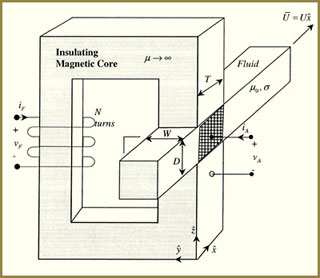Course Description
This course examines electric and magnetic quasistatic forms of Maxwell’s equations applied to dielectric, conduction, and magnetization boundary value problems. Topics covered include: electromagnetic forces, force densities, and stress tensors, including magnetization and polarization; thermodynamics of …
This course examines electric and magnetic quasistatic forms of Maxwell’s equations applied to dielectric, conduction, and magnetization boundary value problems. Topics covered include: electromagnetic forces, force densities, and stress tensors, including magnetization and polarization; thermodynamics of electromagnetic fields, equations of motion, and energy conservation; applications to synchronous, induction, and commutator machines; sensors and transducers; microelectromechanical systems; propagation and stability of electromechanical waves; and charge transport phenomena.
Acknowledgments
The instructor would like to thank Thomas Larsen and Matthew Pegler for transcribing into LaTeX the homework problems, homework solutions, and exam solutions.
Course Info
Instructor
Departments
Topics
Learning Resource Types











